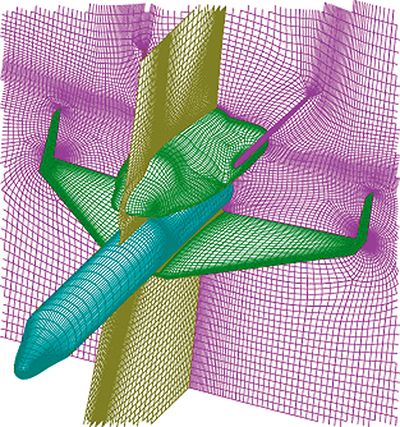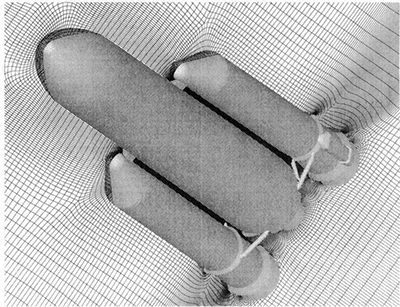Getting a Grip on Grid Generation
Program Development Company of White Plains, New York, is spinning a web around engineering and manufacturing industries with a mesh-generation tool that provides smooth lines throughout the entire volume of a design, no matter how geometrically complex it may be. The company's GridPro technology is an automatic, object-oriented, multi-block grid generator that provides ease of use, high quality, rapid production, and parametric design. When paired with a 3-D graphic user interface called az-Manager, GridPro presents users with an extremely efficient, interactive capability to build topology, edit surfaces, set computational fluid dynamics (CFD) boundary conditions, and view multi-block grids.
The origins of the GridPro technology date back to a 1989 Small Business Innovation Research (SBIR) contract with NASA's Glenn Research Center, in which Glenn was seeking a multi-block grid generation program that would run automatically upon identifying a pattern of grid blocks supplied by a user. Moreover, Glenn desired a system with recognition capabilities to make the necessary adjustments to patterns that were not created exactly to scale. With the Research Center's support, Program Development responded to these needs with a software tool that optimizes grids to be smooth and orthogonal throughout, and to be clustered near locations of high boundary curvature. At the heart of this technology is an intelligent code that frees users from error-prone judgment and allows them to construct high-quality grids with a few clicks of a mouse.
GridPro was purchased by Glenn Research Center and Ames Research Center, and was integrated to work with NASA's own CFD analysis codes, namely GlennHT and WIND CFD. The technology was also used by Glenn to successfully address a recent case involving several hundred cooling holes in a complex turbomachinery blade. GridPro resolved the cooling hole problems by producing a high-quality grid in significantly less time than would be required for most grid generators.
According to Program Development, a two-stage-to-orbit vehicle can be created in just 1 day using GridPro. The company attributes this rapid processing to its powerful topology engine, and graphically oriented, user-friendly tutorials. Once a topology is created, it can be used as a template for future applications, therefore expediting the process for further design work.GridPro also differs from most grid generators on the market, because it does not use surface projection schemes. Models that employ such methods must undergo the painstaking process of creating a new grid every time the surface on the geometry is altered. With GridPro, a user simply needs to replace the geometry in the topology template, and restart the previous grid file to create an entirely new grid. This advanced feature translates into a dramatic reduction in design analysis time. To reduce time even further, GridPro also enables the user to group link topology files and weld independently created grids into one large grid.
GridPro is currently used in many engineering fields, including aerospace, turbo-machinery, automotive, and chemical industries. Customers include Dow Chemical, Solar Turbines, Concepts-Northern, Toshiba, and Mitsubishi. Academic institutions such as Penn State University, Rutgers University, University of Illinois, and Stanford University also rely on GridPro.

Program Development Company's GridPro technology was used to create the conceptual design of a two-stage-to-orbit launcher.

The multi-block grid-generator provides smooth lines throughout the entire volume of a design, despite geometrical complexities













